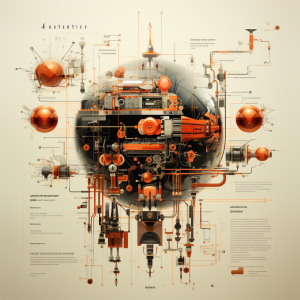
What is the Van der Waals force, and how does it affect intermolecular interactions?
The Van der Waals forces are weak forces of attraction that operate between atoms and molecules. Named after the Dutch scientist Johannes Diderik van der Waals, who first proposed these intermolecular forces as part of his doctoral thesis in 1873, they play a significant role in a wide range of scientific fields, including chemistry, physics, and biology.
Overview
To understand Van der Waals forces, we need to start by recognizing that these forces are not one single type but include several subtypes of intermolecular forces. These forces can be relatively weak, especially when compared with the strong covalent and ionic bonds within molecules, but their cumulative effects can have significant implications at the macroscopic level.
Types of Van der Waals Forces
There are mainly three types of Van der Waals forces:
London Dispersion Forces
The weakest of all Van der Waals forces, they occur between all types of molecules, polar or nonpolar. Also known as induced dipole-induced dipole forces, they arise due to momentary changes in electron density in a molecule, which creates temporary poles. These momentary, or “induced,” dipoles can then induce dipoles in neighboring molecules, leading to a slight attraction. The strength of these forces increases with the size and shape of the molecules involved.
Dipole-Dipole Forces
These forces exist between polar molecules. A polar molecule is one in which the electron density is unevenly distributed, leading to a permanent dipole with partially positive and partially negative ends. The positive end of one polar molecule is attracted to the negative end of another, creating a dipole-dipole interaction. This interaction is stronger than London dispersion forces.
Dipole-Induced Dipole Forces
This type of force happens when a polar molecule induces a dipole in a neighboring nonpolar molecule. The permanent dipole of the polar molecule affects the distribution of electrons in the nonpolar molecule, inducing a temporary dipole. The resulting attraction is weaker than dipole-dipole interactions but stronger than London dispersion forces.
Impact of Van der Waals Forces on Intermolecular Interactions
Despite being relatively weak, Van der Waals forces are crucial in various natural phenomena and everyday life:
Boiling and Melting Points
Van der Waals forces influence the boiling and melting points of substances. Compounds with stronger Van der Waals forces tend to have higher boiling and melting points because more energy is required to overcome these forces. This is why larger molecules, which have stronger dispersion forces due to more electrons, often have higher boiling and melting points than smaller molecules.
Solubility
The solubility of molecules in different solvents is influenced by Van der Waals forces. For example, nonpolar molecules are often soluble in nonpolar solvents due to dispersion forces, following the principle “like dissolves like.”
Biological Systems
In biology, these forces play a significant role in various processes, such as protein folding and protein-protein interactions. They also contribute to the secondary structure of DNA and help to hold the two strands of the DNA double helix together.
Understanding Van der Waals Forces in the Quantum Realm
Interestingly, the understanding of Van der Waals forces has been significantly deepened by quantum physics. The momentary changes in electron distribution that lead to London dispersion forces can be explained by the principles of quantum mechanics.
Furthermore, modern quantum mechanical calculations have allowed scientists to accurately predict and explain the strength of Van der Waals forces in various systems, contributing to advances in fields like molecular modeling and drug design.
Conclusion
In conclusion, Van der Waals forces, despite being weak when
compared to covalent or ionic bonds, play an essential role in determining the properties of substances. They influence the interactions between atoms and molecules, and their effects can be seen in physical properties such as boiling point, solubility, and in the functioning of biological systems. Understanding these forces thus provides valuable insights into the workings of the natural world at the molecular level.




